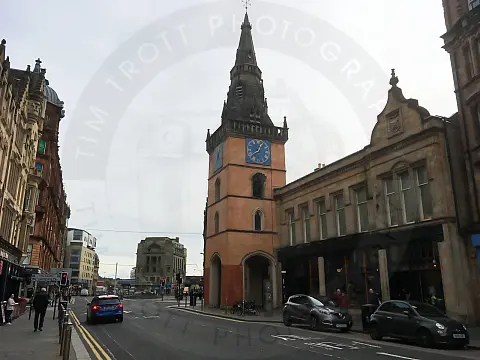The Spooky Origins of Halloween in Ancient BritonThe origins of Halloween can be traced back to ancient Briton when the Celts celebrated their new year on November 1st, and Samhain before.
Halloween can be traced back to ancient Britain when the Celts celebrated their new year on November 1st. This day marked the end of summer and the harvest and the beginning of the dark, cold winter, a time of year that was often associated with human death.
The Celts believed that on the night before the New Year, the boundary between the worlds of the living and the dead became blurred - the thinning of the veil - and on the night of October 31, they celebrated Samhain, when it was believed that the ghosts of the dead returned to Earth.

The Celtic Festival of Samhain
The Celtic Festival of Samhain is thought to be the forerunner to Halloween. Samhain, which means "summer's end" in Gaelic, signalled the conclusion of the harvest season and the start of the winter season. It was a time when the line between the living and the dead was supposed to be blurred and spirits roamed the world. To fend off these spirits, people would build bonfires and dress up in costumes. They believed that if they looked like spirits, then the real spirits would leave them alone. Rituals and rites were also held to honour the dead and seek guidance for the future year. Many of these customs and beliefs have found their way into modern-day Halloween celebrations.
In addition to causing trouble and damaging crops, the Celts thought that the presence of the otherworldly spirits made it easier for the Druids to make predictions about the future. For a people entirely dependent on the volatile natural world, these prophecies were an important source of comfort and direction during the long, dark winter.
To commemorate the event, Druids built huge sacred bonfires, where the people gathered to burn crops and animals as sacrifices to the Celtic deities During the celebration, the Celts wore costumes, typically consisting of animal heads and skins, and attempted to tell each other's fortunes. When the celebration was over, they re-lit their hearth fires, which they had extinguished earlier that evening, from the sacred bonfire to help protect them during the coming winter.
Halloween and the Romans
By AD. 43, Romans had conquered the majority of Celtic territory. In the course of the four hundred years that they ruled the Celtic lands, two Roman festivals, Feralia and Pomona, were combined with the traditional Celtic celebration of Samhain.
Feralia is a day in late October when the Romans commemorated the passing of the dead, while the second was a day to honour Pomona, the Roman goddess of fruit and trees (origin of Apple Bobbing?)
By the early 800s, the influence of Christianity had spread into Celtic lands. In the seventh century, Pope Boniface IV designated November 1 All Saints' Day, a time to honour saints and martyrs. It is widely believed today that the pope was attempting to replace the Celtic festival of the dead with a related, but church-sanctioned holiday. The celebration was also called All-hallows or All-hallowmas (from Middle English Alholowmesse meaning All Saints' Day) and the night before it, the night of Samhain, began to be called All-hallows Eve and, eventually, Halloween.
Origins of Modern Halloween Customs
Halloween is a holiday filled with costumes, candy, and spooky decorations, but do you know where it all began?

People thought that the spirits of the dead would return to the terrestrial realm during this time period, and wearing costumes and masks was a technique to conceal oneself and avoid being recognised by these ghosts. It was thought that by blending in with supernatural entities, one may avoid any possible harm or mischief brought about by the spirits. This tradition of dressing up in costumes and masks has survived the centuries and has become an important part of modern-day Halloween celebrations, allowing individuals to express themselves and turn into different characters for a night of spooky fun.
Pumpkin carving has a rich history that originated in ancient rituals and traditions. The custom also dates back to the ancient Celtic holiday of Samhain, when people carved turnips and other root vegetables to fend off evil spirits. They believed that the carved vegetables would protect them from harmful spirits during the festival. Irish immigrants brought the tradition of pumpkin carving to America, discovering that pumpkins were more frequently available and easier to cut than turnips. As a result, pumpkin carving became a popular Halloween tradition.
Cross Quarter Celebrations
Halloween is a date of astronomical interest as well. October 31st is a cross-quarter date, which is approximately midway between an equinox and a solstice. There are four cross-quarter dates throughout the year, and each is a holiday: Groundhog Day (The US Only, Feb. 2nd), May Day (May 1st), Harvest Day (US Lammas, Aug. 1st), and Halloween (Oct. 31st).













